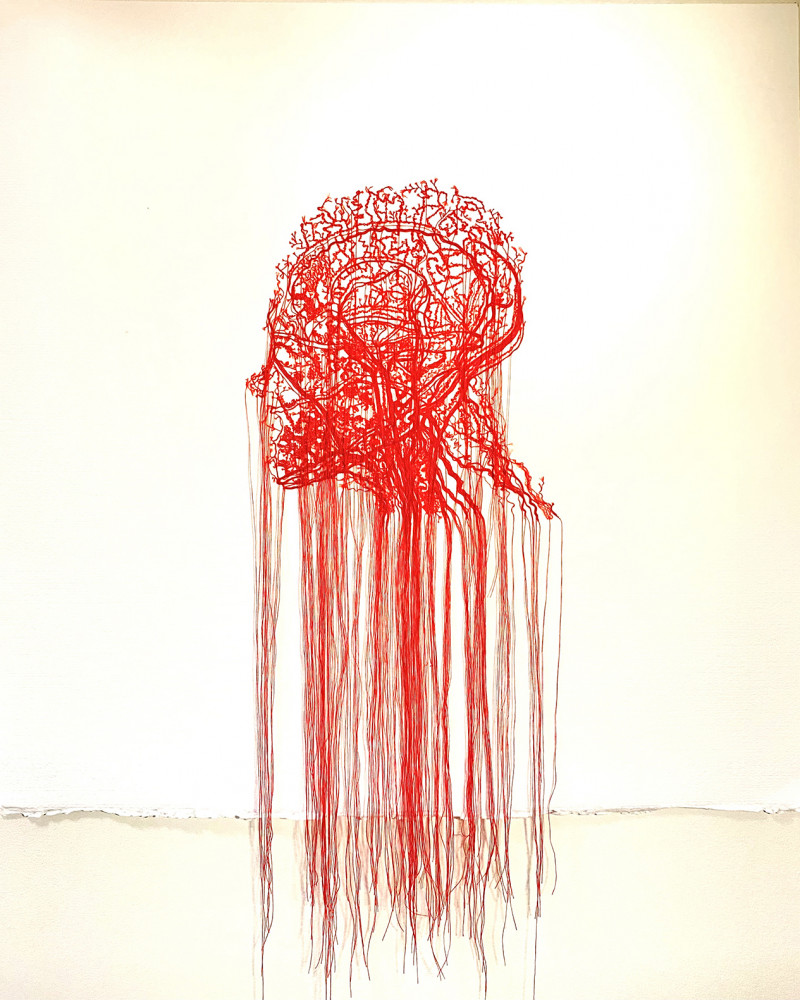
Thinker by Akiko Diegel 2022
Defining drawings by Alessia Belsito-Riera
Entries to the 2024 Parkin Drawing Prize have been received from across the motu and the world. Bird’s nests, plum tree branches, human hair, electrical wires, porcelain plates from 1890, and coal dust from the Maramarua coal mine are among some of the materials used in the 463 entries. Now in its 12th year, the competition was founded in 2012 by arts patron Chris Parkin, who believed the New Zealand art world lacked a substantial drawing award.
“Once again it’s thrilling to see such a strong number of entries utilising such a variety of mediums,” Parkin says. “It demonstrates that despite adversity, creativity in all its forms not only endures but thrives, to brilliantly showcase the resilience of the human spirit.”
With the winner announced on the 5th of August at the New Zealand Academy of Fine Arts in Wellington, visitors from all walks of life will be able to enjoy the 77 shortlisted works on display from the 6th of August until the 1st of September. NZAFA director Wayne Newman tells me a bit more.
What is unique about the Parkin Drawing Prize?
Although the Parkin Drawing Prize remains one of the most prestigious art awards in New Zealand, consistently drawing very high numbers of entries, it also remains one of the most open, with many finalists and winners having been first-time entrants. It can be pivotal for the career of an emerging but yet-to-be recognised artist.
Can you tell me a bit about drawing as an artform?
The oldest confirmed drawing is an ochre cross-hatching on a stone, dated 73,000 years old, but it is reminiscent of marks dating back 100,000 years and it is the choice of surface material that has ensured that it endured. If similar marks were made on wood, horn, or hide, they would not have survived. Line and form remain the essential concerns of classical drawing, which became a recognised artform in Europe only after paper became more readily available after the 14th century. As well as being the simplest and most efficient way to communicate almost any idea, drawing a thing remains the most effective tool for gaining a better understanding of it. Drawing, like other visual arts, was released from its role as a means of representing the visible world by the development of photography, and contemporary drawing is more likely to explore invisible, emotional, or conjectural subjects.
Have you noticed any trends emerge across this year’s submissions?
The selecting judges commented on the prevalence of dark, introspective, deeply personal motifs behind many of the entries this year, seemingly reflecting the uncertainties, frustrations, and disappointments wrought by the pandemic and the societal and economic disruptions that have followed in its wake, and the anxieties conjured by the conflicts and civil disorder that these have in some cases provoked.
What can visitors expect from this year’s competition exhibition?
Visitors can expect to see a range of works representative of the best in contemporary drawing in New Zealand and to be both challenged and intrigued.
View more articles from:
« Issue 225, July 30, 2024

